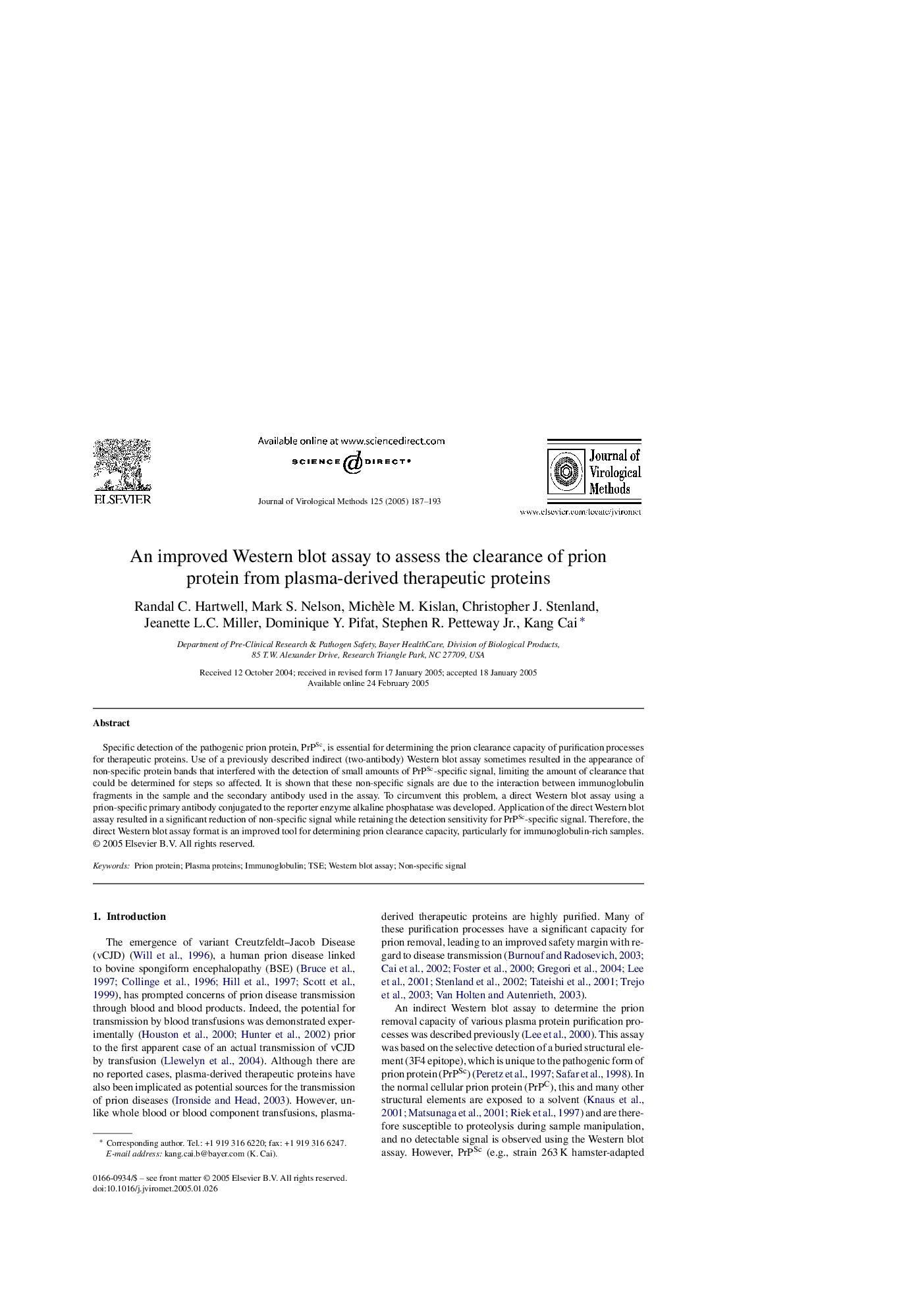| Article ID | Journal | Published Year | Pages | File Type |
|---|---|---|---|---|
| 9279471 | Journal of Virological Methods | 2005 | 7 Pages |
Abstract
Specific detection of the pathogenic prion protein, PrPSc, is essential for determining the prion clearance capacity of purification processes for therapeutic proteins. Use of a previously described indirect (two-antibody) Western blot assay sometimes resulted in the appearance of non-specific protein bands that interfered with the detection of small amounts of PrPSc-specific signal, limiting the amount of clearance that could be determined for steps so affected. It is shown that these non-specific signals are due to the interaction between immunoglobulin fragments in the sample and the secondary antibody used in the assay. To circumvent this problem, a direct Western blot assay using a prion-specific primary antibody conjugated to the reporter enzyme alkaline phosphatase was developed. Application of the direct Western blot assay resulted in a significant reduction of non-specific signal while retaining the detection sensitivity for PrPSc-specific signal. Therefore, the direct Western blot assay format is an improved tool for determining prion clearance capacity, particularly for immunoglobulin-rich samples.
Related Topics
Life Sciences
Immunology and Microbiology
Virology
Authors
Randal C. Hartwell, Mark S. Nelson, Michèle M. Kislan, Christopher J. Stenland, Jeanette L.C. Miller, Dominique Y. Pifat, Stephen R. Jr., Kang Cai,
